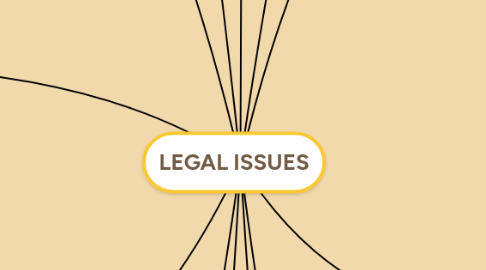
1. 12. Interfacility transfers
1.1. Hospital must do
1.1.1. Provide appropriate medical screening.
1.1.2. Provide appropriate stabilization treatment.
1.1.3. Obtain written informed consent from the PT.
1.1.4. Verify that the receiving facility has available space & qualified personnel to treat PT.
1.1.5. Ensure that the receiving facility have accepted the PT.
1.1.6. Transfer of the PT with appropriate personnel.
1.1.7. Forward all documents and medical records.
2. 11. Documentation
2.1. Medical record should be
2.1.1. Clear.
2.1.2. Factual.
2.1.3. Composed of one's own observations.
2.1.4. Free of opinions and ambiguities.
2.1.5. Without spelling errors.
2.1.6. Unapproved abbreviations.
2.2. Electronic health record (EHR) is used to
2.2.1. Show continuity of care.
2.2.2. Demonstrate allergy cross checking.
2.2.3. maintain a current medication list.
2.2.4. Provide electronic laboratory recording.
3. 10. Unusual events
3.1. Must be documented in incident reports.
3.2. Incident report contain no language admitting liability or blaming others.
3.3. Common reportable events
3.3.1. ERRORS
3.3.1.1. Nursing process
3.3.1.2. Educate PT
3.3.1.3. Medications
3.3.1.4. PT falls
4. 9. Forensics
4.1. Evidence collection
4.1.1. Crucial to understand processes to ensure uncontaminated evidence.
4.2. Evidence preservation
4.2.1. Place all evidence collected in a cardboard evidence box.
4.2.2. Label it with PT name, date, medical record number and signature of the collector.
4.2.3. Secure all evidence retrieved and place in a designated location.
4.3. Chain of custody
4.3.1. Documented record of how the evidence was collected, labeled and transferred to law enforcement representatives.
5. 7. violence & workplace safety
5.1. Violent acts(any act of aggression & can be physical, verbal, emotional assaults).
5.2. Each organization has its own violence prevention program.
6. 8. Reportable conditionss
6.1. Legal responsibility of ER nurse to ensure proper reporting.
6.2. Situations
6.2.1. Any death in ED and deaths within 48 hrs of hospital admission
6.2.2. Abuse
6.2.2.1. Elder
6.2.2.2. Child
6.2.2.3. Disabled adult
6.2.3. Communicated diseases
6.2.4. Extensive burns
7. 2. Unlicensed assistive personnel (UAP)
7.1. RN shouldn't delegate any task to UAPs.
7.2. Supervision of UAP is a growing responsibility of the licensed practitioner.
8. 1. Nurse practice acts (NPA)=Nursing law
8.1. Determine qualifications for entry into professional nursing (Licensed professional nurses).
8.2. Define educational responsibilities.
8.3. PURPOSES
8.3.1. 1. Safety.
8.3.2. 2. Quality.
8.3.3. 3. Define & limit the nursing practice.
8.4. MAJOR THEMES
8.4.1. 1. Nursing process.
8.4.2. 2. Supervision & executing the care plan.
8.4.3. 3. Health maintenance & prevention.
8.4.4. 4. Basic & advanced nursing practicw.
9. 3. Consent
9.1. The PT's acknowledgment & acceptance of treatment.
9.2. TREATMENT without consent ca constitute battery.
9.3. TYPES
9.3.1. Implied
9.3.1.1. Ex: unconsciousness.
9.3.2. Informed
9.3.2.1. Full understanding of risks & benefits of the procedures.
9.3.2.2. Ex: surgery, invasive procedures.
9.3.2.3. ESSENTIAL COMPONENTS
9.3.2.3.1. Explanation
9.3.2.3.2. Discuss risks & benefits of the procedures.
9.3.2.3.3. Alternatives to the procedures.
9.3.3. Involuntary
9.3.3.1. Patient refuses to consent to needed medical treatment.
9.3.3.2. Ex: Psychiatric or Intoxication.
9.3.4. Express
9.3.4.1. Written or oral agreement to treatment.
9.3.4.2. Assessment, medications...
9.3.4.3. Allow any appropriate treatment in an emergency situation.
10. 4.Advance directives
10.1. Written statements of treatment choices whenever a PT is no longer able to communicate his wishes.
10.2. TYPES
10.2.1. Living will
10.2.1.1. Wishes regarding life sustaining treatment (withdrawing, forgoing) AS organ transplantation.
10.2.2. Durable power of attorney for health care
10.2.2.1. Make decisions for PT concerning medical treatment.
10.2.2.2. Health care proxy
10.2.3. Don't resuscitate order(DNR)
10.2.3.1. Legal document detailing PT's own preference for future medical care.
10.2.3.2. No CPR
11. 6. Restraints
11.1. Physical Restraints
11.1.1. Any manual method or mechanical devices.
11.1.2. COMPLICATIONS
11.1.2.1. Skin breakdown
11.1.2.2. Delirium, agitation and fear.
11.1.2.3. Deconditioning.
11.1.2.4. Death due to asphyxia.
11.2. Medical Restraints
11.2.1. A drug used to control behavior.
11.2.2. COMPLICATIONS
11.2.2.1. Respiratory depression.
11.2.2.2. Hemodynamic instability.
11.2.2.3. Decrease competency or judgement.
11.2.2.4. Withdrawal symptoms (agitation).
12. 5. Confidentiality
12.1. Relationship between ER nurses and their PTs
12.2. PT INFORMATION
12.2.1. Written release is signed by PT.
12.2.2. Ordered into court by a legal authority.
12.2.3. For the purpose of continuity of care.
12.2.4. Filling the insurance billing forms.

